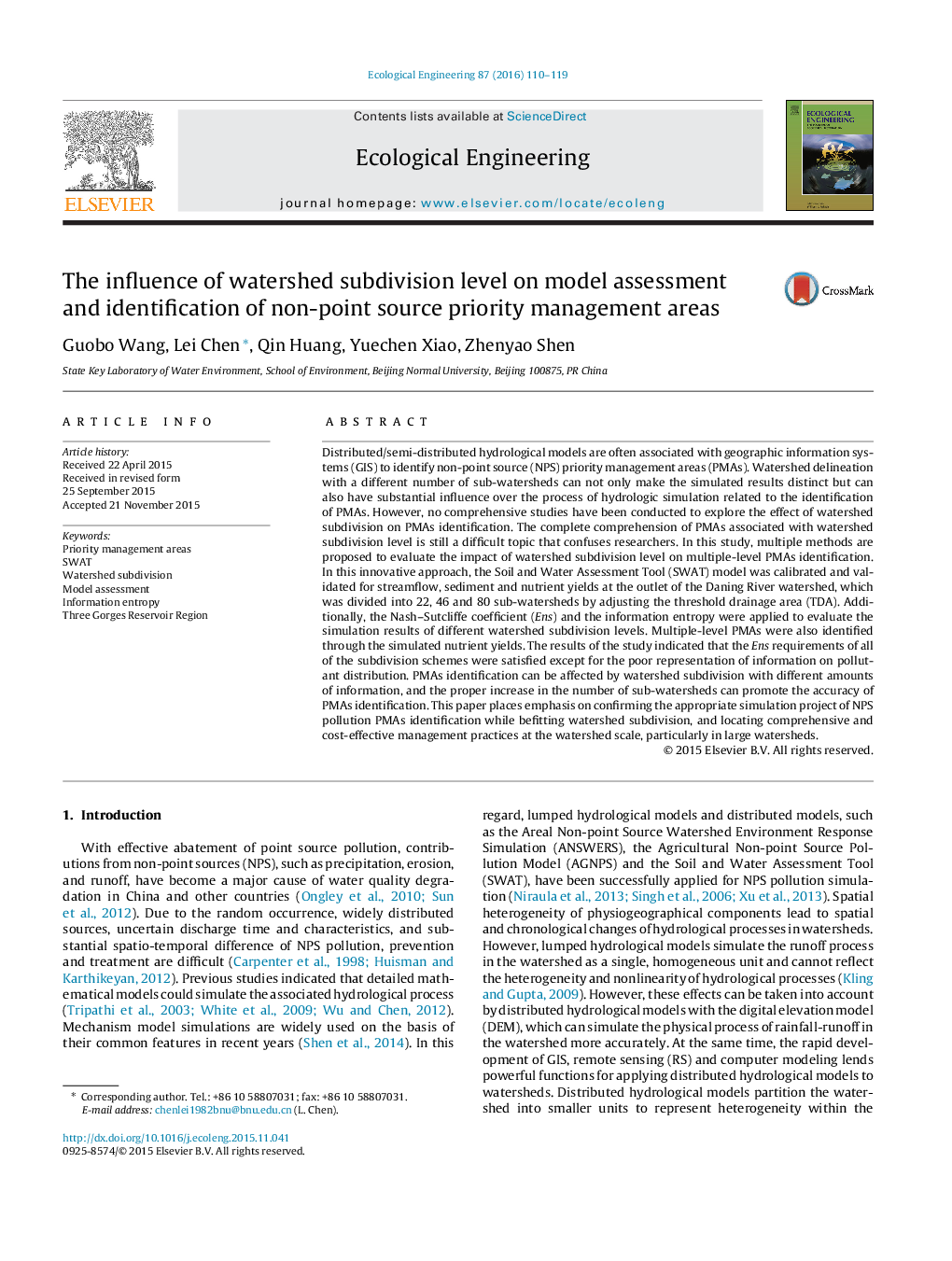| Article ID | Journal | Published Year | Pages | File Type |
|---|---|---|---|---|
| 6301457 | Ecological Engineering | 2016 | 10 Pages |
Abstract
Distributed/semi-distributed hydrological models are often associated with geographic information systems (GIS) to identify non-point source (NPS) priority management areas (PMAs). Watershed delineation with a different number of sub-watersheds can not only make the simulated results distinct but can also have substantial influence over the process of hydrologic simulation related to the identification of PMAs. However, no comprehensive studies have been conducted to explore the effect of watershed subdivision on PMAs identification. The complete comprehension of PMAs associated with watershed subdivision level is still a difficult topic that confuses researchers. In this study, multiple methods are proposed to evaluate the impact of watershed subdivision level on multiple-level PMAs identification. In this innovative approach, the Soil and Water Assessment Tool (SWAT) model was calibrated and validated for streamflow, sediment and nutrient yields at the outlet of the Daning River watershed, which was divided into 22, 46 and 80 sub-watersheds by adjusting the threshold drainage area (TDA). Additionally, the Nash-Sutcliffe coefficient (Ens) and the information entropy were applied to evaluate the simulation results of different watershed subdivision levels. Multiple-level PMAs were also identified through the simulated nutrient yields. The results of the study indicated that the Ens requirements of all of the subdivision schemes were satisfied except for the poor representation of information on pollutant distribution. PMAs identification can be affected by watershed subdivision with different amounts of information, and the proper increase in the number of sub-watersheds can promote the accuracy of PMAs identification. This paper places emphasis on confirming the appropriate simulation project of NPS pollution PMAs identification while befitting watershed subdivision, and locating comprehensive and cost-effective management practices at the watershed scale, particularly in large watersheds.
Related Topics
Life Sciences
Agricultural and Biological Sciences
Ecology, Evolution, Behavior and Systematics
Authors
Guobo Wang, Lei Chen, Qin Huang, Yuechen Xiao, Zhenyao Shen,
